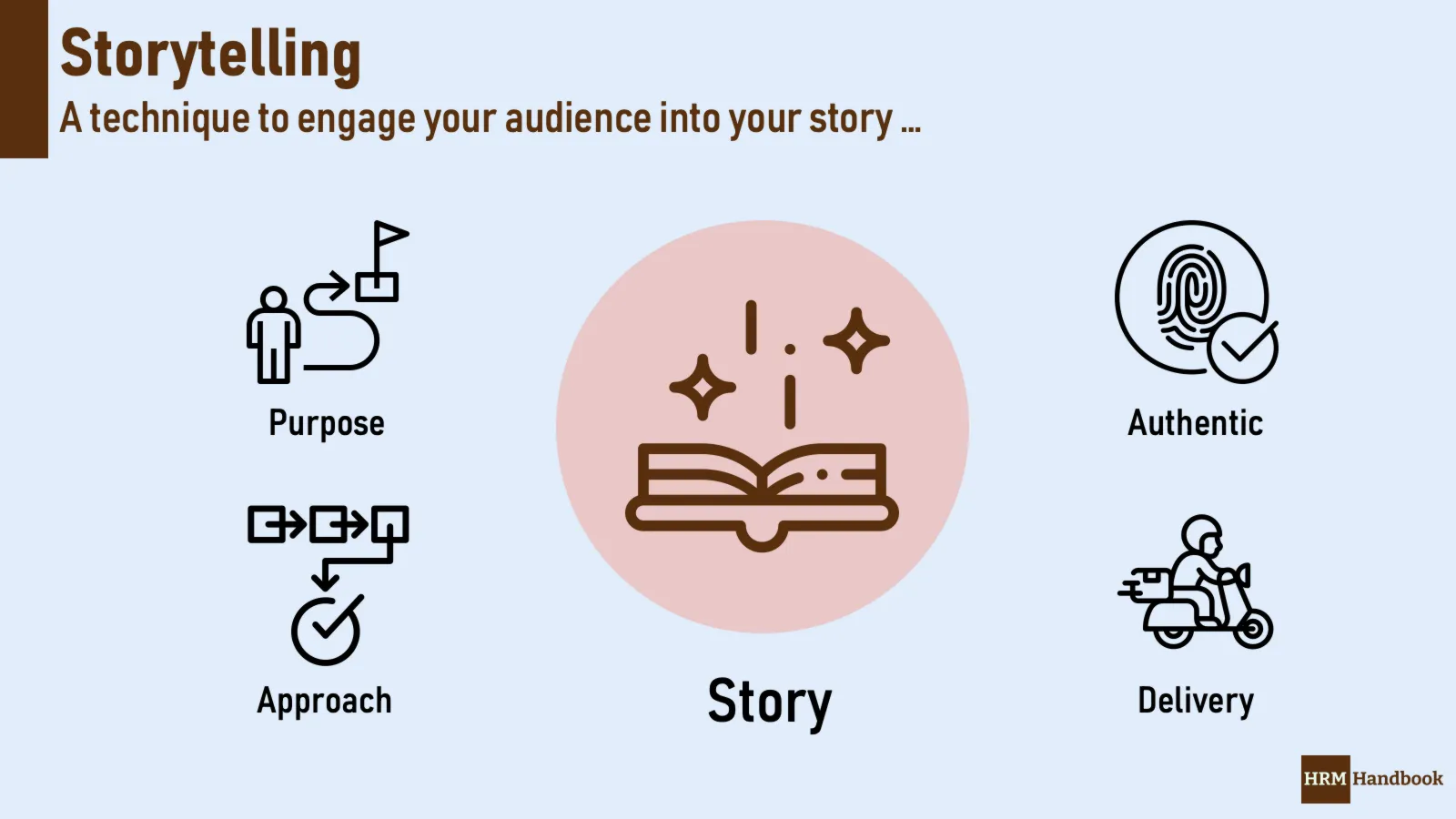Storytelling
Storytelling is a top skill and competency of leadership and business skills in general. It is a persuasive technique where the speaker does not present dry data, does not have a powerpoint presentation behind him as a protective wall, he uses mainly engaging words from which he composes a story that engages the imagination of the audience and reaches their positive and negative emotions. It’s about engaging the listeners in a story they want to experience with the speaker. It is not only used in client persuasion, but is also important within a company to gain support for a strategic plan, a major reorganization, or general support for challenging corporate goals.
Storytelling is a technique that is personal, that is, the speaker talks about himself and the audience and draws them into the story. The focus is not on a technical PowerPoint presentation, for example, that serves at most as a backdrop; the basis is storytelling and the personality of the presenter. This makes it very different from traditional presentations where the data and its presentation are at the centre. Here the data serves as a guide to the story.
Storytelling is extremely effective especially when the speaker needs to motivate and move the audience in a certain direction. The speaker wants the audience to help them achieve challenging corporate goals. At such a time, it is necessary to win the hearts of the audience, which can only be done by establishing an emotional bond, and this is best achieved by telling a compelling story.
In corporate environments, the conventional art of oratory is often used, where the speaker arms themselves with a technical PowerPoint presentation full of charts, data and possible future trends. And on top of that, a message is laid down that says that the company’s biggest challenge lies in a particular area and that it is important to address that area in order for the company to maintain or increase its profitability in the future.

All reasoning is based on statistics, facts, trends and evidence gathered during the analysis and preparation. Often an extensive analysis of the market and all competitors and their products is included. And it looks for a way to technically beat the competition - in quality, price or ease of use.
A common problem with this is that it is spoken in an audience where everyone has their own set of statistics, data and has their own idea of what the market looks like. And what happens is that instead of solving the problem, it becomes a question of which number can be trusted and which is more acceptable to the audience. This moves away from the problem to the solution to each participant taking away in their own mind the attitude of how much they believe or don’t believe the data presented. However, this makes it very difficult to build any emotional commitment about doing my best to achieve the goal.
The second way to convince people - and ultimately a much more powerful way - is to connect the idea with the emotion. The best way to do this is to tell a compelling story. Not only do you weave a lot of information into the story, but you also arouse emotion and energy in the listener. However, persuading with a story is hard.
Any intelligent person can sit down and make lists. It takes rationality to make an argument using conventional rhetoric, but little creativity. But to present an idea that has enough emotional power to be memorable requires keen insight and storytelling skill. If you can harness imagination and the principles of a well-told story, then people will rise from their seats to thunderous applause instead of yawning and ignoring you.
What’s in a good story that moves a company?
In the end, the rules of a good story that engages are relatively simple:
- It is based entirely on truth and contains useful information and references throughout the story.
- It can stimulate the audience’s key motivators, responds to their needs and can provide key answers at the right moment.
- It includes the vision and reason why the company exists, how it helps its clients and how it is beneficial.
- It is not about the firm, it is mainly about its clients, how beneficial the solution will be to solve their problems and concerns. The firm itself is only secondary because it will help clients fulfill their dreams.
- It contains the right amount of emotion and will allow the audience to create their own picture of the future in their head and where their place is in that future.
- Respects the basic rules of storytelling - beginning, crisis and resolution. Something that hasn’t changed since the days of ancient Greece.
- And how the clients, the solution and the firm will complement each other.
And these are all rules a good story must follow to be compelling, have a story line and a conclusion the audience can walk away with.